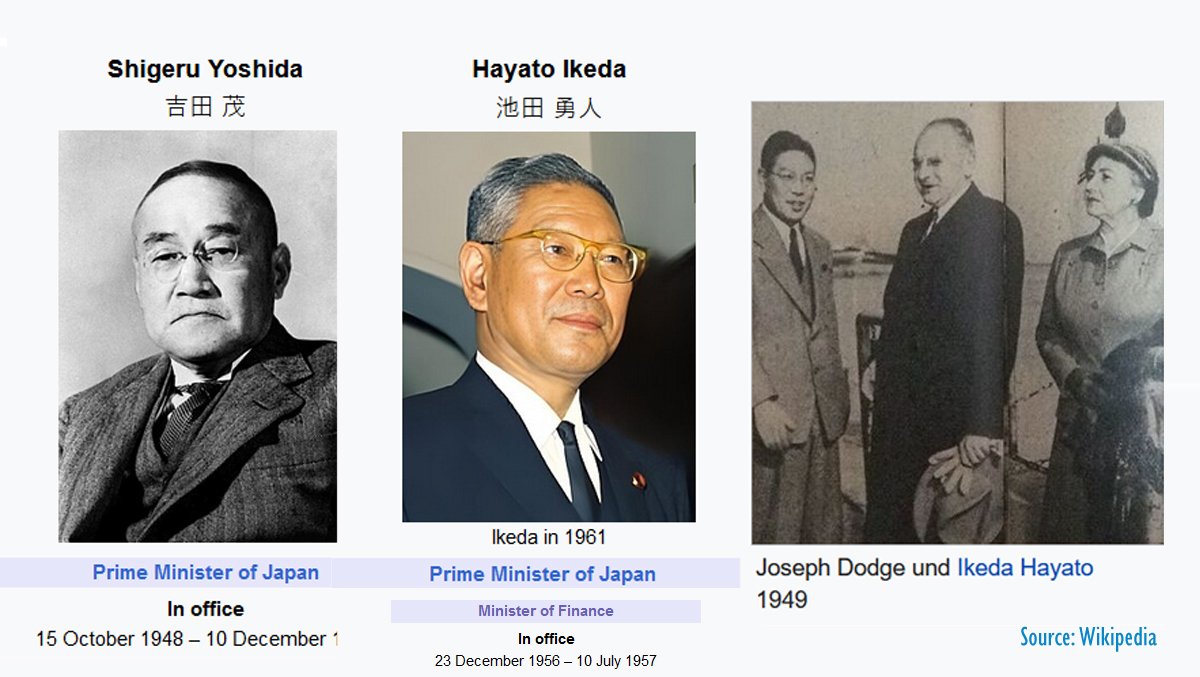
ECONOMYNEXT – Sri Lanka can learn from Japan’s success where the country emerged from the crises stronger sometimes due to external pressure, Japan’s Ambassador to Colombo Mizukoshi Hideaki has said.
Sri Lanka is currently under an International Monetary Fund program after monetary stability was lost for the umpteenth time after aggressive monetary policy, and the country went through its first sovereign default.
Japan’s first phase of modernization came during the so-called ‘Meiji restoration’ in the 19th century which turned the country into a nation state with many European style institutions and ended the isolationist policies of the Tokugawa shogunate.
Dramatic Transformation
“In 1868, Japan embarked on a dramatic transformation from a feudal society, a society run by samurais into a modern nation-state,” Ambassador Mizukoshi said according to prepared remarks delivered at the JICA Chair Special Programme this week.
“This period of change, known as the Meiji Restoration, began with the restoration of imperial rule and led to profound changes in Japanese society, economy, and governance.”
“It is essential to note that many reforms in Japan occurred against the backdrop of foreign pressures to open the country to foreign trade, symbolized by the arrival of a large modern US Navy fleet, so to speak Commodore Perry’s Black Ships.”
The Meiji leaders set broke up the Samurai class, set up a more centralized government, with prefectures, introduced a Western legal system and a new constitution, laying the groundwork for a parliamentary democracy.
“In terms of economic modernization, the government actively promoted industrialization,” Ambassador said.
“This included the establishment of a modern banking system, the construction of railroads and telegraph lines, and the adoption of Western technologies.
“The government fostered high quality silk industry for export and encouraged zaibatsu, or powerful business conglomerates, which played a crucial role in Japan’s industrial growth until World War II.
“In education, a national system was established, inspired by American and French models, which emphasized universal education and literacy.
“This was a revolutionary change, as it provided the general population with access to education, fostering a more informed and capable workforce.”
Japan also had inflation episode which led to the setting up of a gold standard Bank of Japan ending an almost free-banking style system, under Masayoshi Matsukata in the 1880s. A mass-privatization program was also done.
By the turn of the century Japan was an industrial power.
Nationalism and War
Meanwhile, ambassador Mizukoshi said nationalism and militarism then started to grow in the country “and a sense of superiority over other Asian ethnicities following its victory in Russo-Japanese war.
“Subsequently, Japan pursued colonization in the Korean Peninsula, further aggression in China, and escalated tensions with Western nations which are seeking equal opportunities for trade and investment in Asia,” he said.
“Amidst this nationalistic trend, Japan overestimated its capabilities, lost strategic judgment, and, fueled by a sense of invincibility, carried out the ill- advised attack on Pearl Harbor, leading to its involvement in World War II.
“Immediately after the attack on Pearl Harbor, Japan also started to attack South East Asian and South Asian countries including Ceylon under colonial rule at the time.”
Reconstruction
Following the World War II Japan came under US occupation. Liberals then came back to power.
“The Government of Japan was headed by Prime Ministers, such as Yoshida Shigeru, who had been pursuing peace before World War II as a diplomat in conflict with the military government at the time and had the determination to transform Japan into a more democratic and peace-loving country.
“The Goal of occupation for the United States at the beginning of the occupation period was to bring about change in Japanese society so that the militarism that prevailed before and during the War would never be revived and Japan would never become a threat again to the US and its allies.
“For that purpose, the allied forced not only abolished the Japanese military forces but also tried to make economic and social changes to make Japan a less authoritarian and more egalitarian society with a robust middle class with democratic ideas.”
The US then shifted its objective to reconstruction because Americans thought the Japan in extreme poverty would be vulnerable to communist ideology promoted by Soviet Union and the communist China at the time.
Dodge Line Stabilization
However peacetime inflation rocketed under US occupation.
“It was in such context that the US dispatched Joseph Dodge, a Chairman of an American bank and strong believer of free market mechanism to Japan to advise on overall economic policies,” the ambassador said.
“His recommendations which are named “the Dodge Plan” centered on balancing the national budget, combatting the super inflation and reducing government subsidies.
“His role was similar to the role that the IMF mission plays for the Sri Lankan economy at this moment.”
However, analysts say the Joseph Dodge was not like the IMF which advocates flexible inflation, targeting and other discretionary policies for the central bank.
Dodge had worked in West Germany with Ordoliberals who set up the Deutsche Mark helping create the ‘German Economic Miracle’.
Under Dodge ctivities of the Reconstruction Development Fund, a banking entity which was financed by selling bonds to the Bank of Japan which was fueling inflation was suspended.
The exchange rate was also fixed at 360 yen to the US dollar, ending multiple exchange rates that had developed due to money printing.
As a result, BoJ could not engage in aggressive ‘monetary policy’, depreciate the currency and trigger social unrest due to its commitment to the fixed exchange rate rule.
Despite the lack of aggressive open market operations to destroy the currency like in Sri Lanka now, the Yen came under pressure from time to time (such as in 1953 due to BOJ discounting export and import bills).
The exchange rate held until US macroeconomists busted the Bretton Woods in 1971 and then the Yen appreciated.
Japan’s tax system was also overhauled during occupation.
“On tax policy, Carl Shoup, Professor of Economics of Colombia University was dispatched to Japan,” he said.
“He recommended several principles for the tax system in Japan such as fairness of the burden, centrality of income tax, introduction of wealth tax, and inheritance tax.
“It is worth reflecting on how such recommendations by foreign experts under occupation helped Japan to lay the basis of new fiscal and tax policy, which paved its way to the economic miracle after its independence from occupation.”
Under strong growth and low inflation liberals had ruled almost continuously since the end of World War II.
“Turning to Japanese politics, Japan was governed consistently by business-friendly conservative parties, first by the Liberal Party led by Shigeru Yoshida, succeeded by the Liberal Democratic Party (LDP), which was created in 1955 by the merger of the Liberal Party and Democratic Party, to be another conservative party,” he said.
Wise Leaders
Though many reforms in Japan came with foreign pressure, Japanese leaders who were reformist accepted them.
“Looking back at Japan’s history, most reforms in Japan that were achieved would not have been possible without pressure from the international community,” the ambassador said.
“The reformist leaders of Japan, whether during the Meiji restoration period or under occupation after WWII, had made wise decisions for the future of the country decisions under foreign pressure.
“Today, Sri Lanka is trying to reform the economic system under the agreement with the IMF.
“Reforms such as tax reform, electricity reform, or SOE reform may be challenging and not always popular to citizens. However, viewing the utilization of such external pressure for the betterment of the country should not be seen as a weakness but as a testament to the wisdom of leaders.
“From an international perspective, agreements with the IMF serve as backing for Sri Lanka’s commitment to pursuing rational and consistent economic policies.” (Colombo/Oct03/2024)
